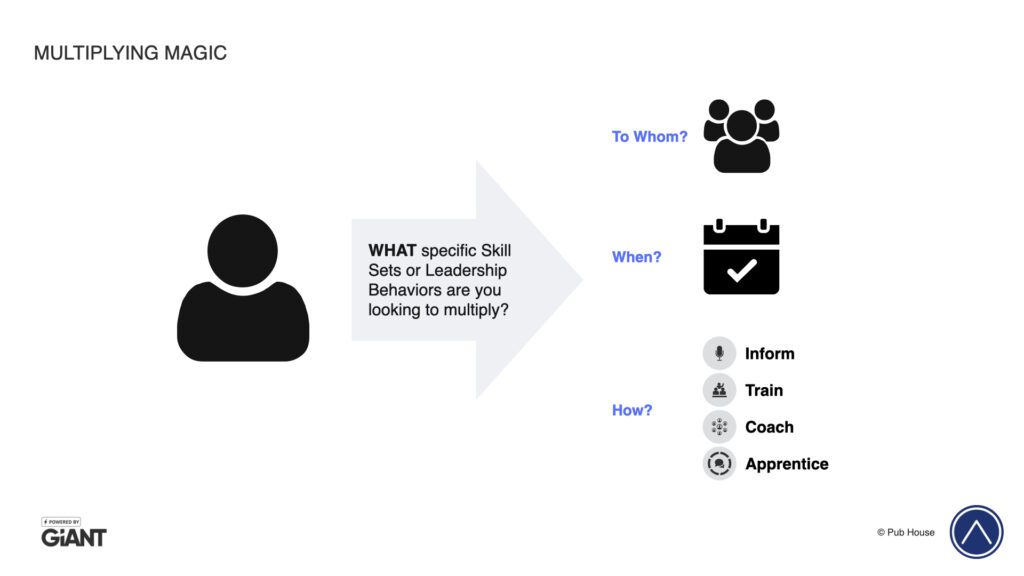The Case for Building a Leadership Bench
You want more time. But your team keeps bringing problems to your desk. Everyone still needs you. Hiring decisions, project approvals, client escalations — they all somehow land back on your desk. You’re asking yourself, “Why can’t my team take initiative?”
Here’s the truth: Most teams want to step up. But they haven’t been developed to lead. You haven’t built your leadership bench. Yet.
You’re coaching performance, not developing leaders.
The Hidden Time Drain
You didn’t mean to create dependency. It happened naturally:
- On day 1, you were the expert.
- You knew what “right” looked like.
- And it was often faster to do it yourself.
But now your business is bigger — and so is the cost of that habit. Without a leadership bench:
- You stay trapped in the weeds
- High-potential people wait instead of lead
- You can’t scale because you’re the whole system. You have become the bottleneck.
Every hour you spend solving problems your team could solve is an hour you’re not building the future.
The Reframe: Leaders Add Time by Multiplying Capacity
Owners often think the only way to gain time is to delegate. But delegation without development is just shifting tasks.
You don’t need to grind harder — you need to scale your leadership. That means developing leaders who can think, decide, and act without you. The real solution is to multiply leadership capacity — to develop decision-makers, not just doers.
We help founders and executives move from heroic effort to sustainable empowerment.
Real-Life Story: The Tech CEO
A startup founder we worked with had built a 45-person SaaS company. He had talented directors, but they constantly came to him for budget approvals, product decisions, and personnel issues.
The founder worked 70-hour weeks, dreaming of a future that never came.
After walking the CEO through a People Development GPS to uncover the issue: every director had been promoted based on performance, but never developed as a leader. We launched the Next Level Leaders program, introduced CORE Plans, and mapped each director on the Delegation Cycle.
Six months later:
- Directors were running their own hiring and budgeting
- The CEO’s strategic planning time doubled
- Cross-functional collaboration increased — without him mediating
Three months in, he reclaimed 10+ hours/week and started focusing on the work he enjoyed most.
Tools That Help: Multiplying Magic
The Multiplying Magic tool is a practical framework for intentional leadership development. It helps leaders move beyond doing tasks themselves to actively transferring skills and leadership behaviors to others.
The starting point is asking: What specific skill set or leadership behavior do I consistently deliver that brings value—and needs to be multiplied?

Rather than holding onto that “magic” as something only you can do, this tool calls you to give it away with clarity and purpose.
Once the “what” is defined, the next questions are:
- To Whom? Who on your team is ready or needs to grow in this area?
- When? When is the right time to begin the handoff?
This tool encourages leaders to think proactively about who needs development and not to wait until there’s a crisis or a gap.
Multiplication doesn’t happen by default. It happens by design.
From there, the tool outlines four clear stages of transfer: Inform, Train, Coach, and Apprentice.
- Informing is simply sharing the knowledge through information transfer.
- Training provides structured practice.
- Coaching is direct, 1:1 discussion to refine and personalize.
- Apprenticing is where ownership is transferred, and the new leader carries it forward with confidence.
These stages help ensure that development isn’t rushed or assumed. It’s guided and intentional.
Ultimately, Multiplying Magic is about more than delegation. It’s about building trust, expanding ownership, and creating a culture where leadership isn’t centralized but scalable. When used consistently, it allows leaders to replicate their best contributions in others, develop internal capacity, and build organizations that don’t rely on a few, but thrive through many.
This is how we create bigger futures: multiplying what’s working, one leader at a time.
Three Practical Steps to Start This Month
- Audit Your Decisions: Track what decisions you’re still owning. Identify which could be handled by others — with the right coaching. Explore the 70:30 Task Plan from our ORG ID Playbook.
- Launch CORE Plans: Select 2–3 team members to pilot a CORE growth plan. Give them specific development goals, coaching rhythms, and feedback cycles.
The Bottom Line
You don’t need another productivity hack — you need more leaders. That is what scales your business and gives you time back.
When you develop your bench, you buy back your time, boost your team’s confidence, and create the kind of culture that scales without breaking.



